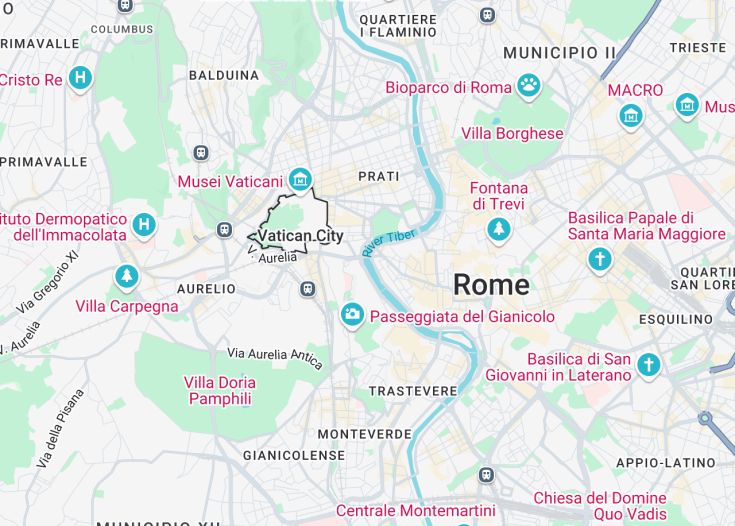The Tiber River is an iconic waterway that flows through the heart of Rome, Italy, enriching the city’s historical narrative and picturesque landscapes. With its banks lined with ancient ruins, churches, and vibrant neighborhoods, the river symbolizes the cultural essence of the eternal city.
For an unforgettable experience, take a leisurely stroll along the Tiber River’s scenic pathways. The riverbanks provide enchanting views, especially at sunset when the lights of Rome shimmer on the water’s surface.
Consider embarking on a leisurely boat tour along the Tiber. This unique perspective allows travelers to appreciate Rome’s renowned landmarks from the water while enjoying a serene escape from the bustling city streets.
Tiber River: The Heart of Rome’s Charm
The Tiber River flows through the very soul of Rome, Italy, offering a picturesque setting that has captivated travelers for centuries. Spanning approximately 405 kilometers, it winds its way through the historic city, serving as a backdrop for iconic landmarks and vibrant neighborhoods. Visitors to the Tiber can admire the stunning architecture that lines its banks, from ancient ruins to modern cafés. The river is not only a vital waterway but also a hub of culture and history. Many festivals and events take place along its shores, showcasing the city’s rich heritage and lively atmosphere. Whether you’re taking a leisurely stroll along its pathways, enjoying a boat ride, or simply soaking in the scenic views, the Tiber River is an essential part of any Roman experience. Its flowing waters tell stories of the past, making it a must-see destination for tourists seeking to understand the essence of Rome.
Exploring Attractions Along the Tiber River
One of the best ways to experience the Tiber is by visiting the various attractions nestled along its banks.
Stroll Along the Riverwalk
Take a charming walk along the riverwalk, where you can enjoy picturesque views of the city while discovering the hidden gems of Rome.
Visit the Island of Tiberina
Don’t miss the Island of Tiberina, a small island featuring ancient temples and lovely gardens. It’s a peaceful escape in the heart of the bustling city.
Cultural Events
Throughout the year, the Tiber River hosts numerous cultural events, including music festivals and art exhibitions, inviting visitors to engage with the vibrant local culture.
The Fascinating History of Tiber River’s Bridges
One of the most visually striking features of the Tiber River is its historic bridges. The Ponte Sant’Angelo, built in the 2nd century AD, stands out with its stunning statues of angels. These bridges not only connect various parts of the city but also serve as important historical landmarks. Each bridge has its unique story, reflecting the architectural brilliance of different eras. Walking across these ancient pathways allows visitors to step back in time and relish the beauty that has stood the test of time in Rome’s rich tapestry of history.
Experience the Enchantment of the Tiber River in Rome, Italy
The Tiber River, an iconic symbol of Rome, provides a mesmerizing experience for weary travelers and curious explorers alike. As you stroll along its banks, you’ll be enveloped by the stunning views of ancient ruins, modern bridges, and bustling city life. This is not just a river; it is a lifeline of history, culture, and beauty that draws visitors from around the globe.
The Tiber River is particularly suitable for anyone looking to immerse themselves in the rich tapestry of Roman history. Couples seeking a romantic evening can enjoy sunset walks, while families can create lasting memories during leisurely picnics along the banks. History buffs will appreciate the nearby ancient landmarks such as Castel Sant’Angelo and the Vatican City, which align beautifully with the river’s winding path.
Whether you’re indulging in a gelato on the riverside or taking a scenic boat tour, the Tiber River offers a unique perspective of Rome’s magnificent architecture and vibrant culture. It beautifully integrates into a larger tourist route, with easy access to nearby attractions, making it a must-visit on any itinerary. A walk along the river can easily transition to a visit to the stunning Trastevere district, known for its charming streets and authentic Italian cuisine.
For some unique insights, consider taking a guided boat tour that provides an insider’s perspective on the historical significance of the Tiber and its role in Rome’s development over the centuries. Additionally, keep an eye out for local art installations along its banks, as well as seasonal festivals that often take place here, giving visitors a taste of local culture and entertainment.
Best Times to Visit the Tiber River in Rome, Italy
The Tiber River offers a remarkable experience throughout the year, but the best times to visit are during the spring and early autumn, when the weather is mild and ideal for outdoor activities. During these seasons, the river banks come alive with locals and tourists alike, enjoying the lush scenery and vibrant atmosphere.
Recurring Events
One of the most engaging times to visit is during the “Festa de’ Noantri,” typically occurring in July. This local festival celebrates the Virgin of Mount Carmel and features a rich array of cultural activities, including processions, local food markets, and live music, making it a festive opportunity to experience the Tiber’s lively ambiance.
Accessibility and Limitations
The Tiber River is largely accessible to visitors, offering several pathways for pedestrians and cyclists. However, certain areas can experience limitations due to high water levels or maintenance activities.
Accessibility
Limitations
- Some sections may be closed during inclement weather.
- Safety barriers in certain areas restrict direct access to the water.
- Fishing is not permitted in designated zones along the river.
Notes to visitors
- Consider visiting in the early morning or late afternoon for a more peaceful experience.
- Bring comfortable shoes, as a lot of walking is involved.
- Be mindful of pickpockets in crowded areas, especially during tourist season.
General Information
Plan your visit to the Tiber River effectively to ensure an unforgettable experience.
Location
The Tiber River flows through the heart of the city, with easy access near famous landmarks like the Ponte Sisto and Ponte Sant’Angelo, both of which serve as excellent starting points for your river exploration.
Address:
Lungotevere dei Sangallo, 00186 Roma RM, ItalyVisiting Information
The Tiber River is open for visitors and can be freely explored at any hour. For the best experience, it’s recommended to visit during the golden hour, just before sunset, when the city’s architecture is bathed in a warm glow.
How to Reach the Tiber River
You can easily reach the Tiber River from the city center via various modes of transportation:
Car
The Tiber River is accessible by car, with several parking options nearby offering reasonable rates. Be prepared for potential traffic during peak hours.
| Route | Distance | Travel time |
|---|---|---|
| From Roma Termini | 2 miles (3.2 Km) | 10 minutes |
| From Piazza del Popolo | 1.5 miles (2.4 Km) | 8 minutes |
| From Colosseum | 2.5 miles (4 Km) | 12 minutes |
Public Transport
Public transportation is a great way to reach the Tiber River:
The following nearby metro and bus options will help you navigate to the river’s edge:
| Public Transport Option | Duration |
|---|---|
| Bus 64 (from Termini to Piazza Navona) | 20 minutes |
| Metro Line A (to Ottaviano) | 15 minutes |
| Tram 8 (to Piazza Mazzini) | 25 minutes |
Nearby Attractions
- Castel Sant’Angelo – 0.5 miles (0.8 km)
- Ponte Sant’Angelo – 0.6 miles (1 km)
- The Vatican – 0.9 miles (1.5 km)
- Trastevere – 1 mile (1.6 km)
- Piazza Navona – 1.2 miles (2 km)
- Campo de’ Fiori – 1.3 miles (2.1 km)
- Palazzo Venezia – 1.5 miles (2.4 km)
- Roman Forum – 1.7 miles (2.7 km)
- Colosseum – 2 miles (3.2 km)
- Piazza del Popolo – 2.1 miles (3.4 km)
- Botanical Garden – 2.3 miles (3.7 km)
- Villa Borghese – 2.5 miles (4 km)
Common Questions
What are the historical significance and landmarks along the Tiber River in Rome?
The Tiber River holds immense historical significance for Rome, often considered the lifeblood of the ancient city. This river not only facilitated trade and transportation for centuries but also served as a crucial defense line against invasions.
Along its banks, visitors can find numerous landmarks that highlight its rich heritage. Key sites include:
- The Island of Tiberina – This small island in the middle of the river contains the ancient hospital and is a vital link between the city’s neighborhoods.
- The Ponte Sant’Angelo – A stunning pedestrian bridge lined with angels designed by Bernini, this bridge connects the historic center of Rome to the Castel Sant’Angelo.
- The Theater of Marcellus – Situated near the river, this ancient theater, built in the late 1st century BC, is a testament to Rome’s grand architectural legacy.
- Circus Maximus – Although mostly in ruins today, this ancient chariot racing stadium lies close to the river and is a must-visit for history enthusiasts.
- Trastevere and the Tiber Walkway – The vibrant Trastevere neighborhood features charming streets along the Tiber, offering an intimate view of Rome’s culture and lifestyle.
In summary, the Tiber River is not only a geographical feature but a central thread that intertwines the rich history of Rome, making its banks a reflection of the city’s past and present.
What activities can tourists enjoy on the Tiber River?
The Tiber River offers a diversity of activities that allow tourists to experience Rome from a unique perspective. Whether you’re looking to relax or engage in adventure, there’s something for everyone along this iconic waterway.
Some popular activities include:
- River Cruises – Enjoy a leisurely boat ride along the Tiber, which provides stunning views of Rome’s landmarks from the water, including ancient bridges and historical buildings.
- Kayaking and Canoeing – For a more active approach, guided kayaking excursions are available, offering a fun way to explore the river while enjoying the scenery.
- Picnicking – Many areas along the riverbanks have green spaces where visitors can relax with a picnic. The riverside path offers beautiful settings away from the bustling city.
- Walking and Biking Trails – The pathways along the Tiber are perfect for leisurely strolls or bike rides, providing insights into Roman life as you explore the riverside scenery.
- Outdoor Markets and Festivals – Various events and markets are frequently held along the riverfront, showcasing local crafts, foods, and cultural performances, especially during the warmer months.
Through these activities, the Tiber River enhances the Roman experience, offering both relaxation and adventure against a breathtaking backdrop of history.
What wildlife can be observed in and around the Tiber River?
The Tiber River is home to a surprising variety of wildlife, providing an opportunity for nature enthusiasts to engage with the ecosystem while visiting the historic city of Rome. While commonly known for its urban surroundings, the river and its banks host a range of species.
Some of the wildlife you can encounter includes:
- Birds – The Tiber attracts various bird species. Look out for herons, ducks, and the occasional kingfisher, especially in more tranquil sections of the river.
- Fish – The river provides habitats for different fish species, including carp and eels, which can sometimes be seen swimming near the banks.
- Invertebrates – A variety of aquatic invertebrates contribute to the river’s ecosystem, playing essential roles in water quality and food chains.
- Riverbank Flora – The vegetation along the Tiber’s banks supports various small animals and insects. Willows and other trees provide shelter and nesting sites.
- River Dolphins – Rarely spotted, but there have been occasional reports of dolphins entering the Tiber during peak seasons, offering a delightful surprise for nature lovers.
Overall, the Tiber River acts as a vital ecological corridor in Rome, reminding visitors of the importance of maintaining biodiversity even within urban contexts.
What are the best viewpoints along the Tiber River for scenic photography?
For photography enthusiasts, the Tiber River presents a plethora of picturesque viewpoints perfect for capturing the beauty of Rome. The mixture of historic architecture, vibrant culture, and natural landscapes makes this area highly attractive for stunning snapshots.
Consider these prime locations for photography:
- Ponte Sant’Angelo – This iconic bridge, especially during sunset, provides a fantastic vantage point of the Castel Sant’Angelo and the river reflecting light.
- Trastevere Neighborhood – The cobbled streets and quaint buildings along the Tiber’s side in Trastevere offer countless charming backdrops for photos.
- Tiber Island – The small, picturesque island is perfect for capturing both the riverbanks and the historical sites flanking it.
- The Aurelian Walls – Find angles from the bridges that show off the greenery of the river juxtaposed against the ancient walls of Rome.
- Janiculum Hill (Gianicolo) – A bit farther away but absolutely worth the climb, this viewpoint provides sweeping panoramic views of the city and river below.
With these captivating viewpoints, you’ll be able to capture Rome’s vibrant life and architectural wonders framed by the beautiful Tiber River.
How has the Tiber River influenced Rome's culture and traditions?
The Tiber River has played a significant role in shaping Rome’s culture and traditions throughout history. It has been more than just a source of water; it has greatly influenced the social, economic, and spiritual life of Romans.
Some aspects of this influence include:
- Waterway for Trade – In ancient times, the Tiber served as a major trade route, facilitating commerce, cultural exchanges, and the spread of ideas amongst civilizations.
- Spiritual Importance – The river has also been a site for various religious rituals, with many ancient temples constructed nearby, embodying its significance to both gods and the city’s citizens.
- Cultural Celebrations – Events like the “Festa della Barcane,” where magnificent boats adorn the river, showcase the Tiber’s cultural relevance, celebrating local traditions and community bonding.
- Art and Literature – Numerous artists, poets, and writers have drawn inspiration from the river, capturing its beauty and significance in their works, thereby embedding it in the cultural fabric of Rome.
- Riverside Lifestyle – The Tiber’s banks have influenced social life, from bustling markets to leisurely strolls, contributing to the city’s vibrant street life and local customs.
In summary, the Tiber River has profoundly shaped Rome’s identity, serving as a witness to its evolution and a fertile ground for continuing cultural practices.

Is the Tiber River in Rome Worth Visiting?
The Tiber River offers a unique glimpse into Rome’s history, but it may not be the primary focus for most tourists. While it provides a lovely backdrop for leisurely walks, the river itself lacks the extensive attractions found in other parts of the city.
Visitors can enjoy the scenic views and perhaps indulge in a riverside meal, but many might find that time is better spent at iconic spots like the Colosseum, Vatican City, or the Roman Forum.
For those looking to capture the essence of Rome, the Tiber River is a nice addition to your itinerary, yet it is not essential. Enjoy the atmosphere but prioritize your time on more significant landmarks.









